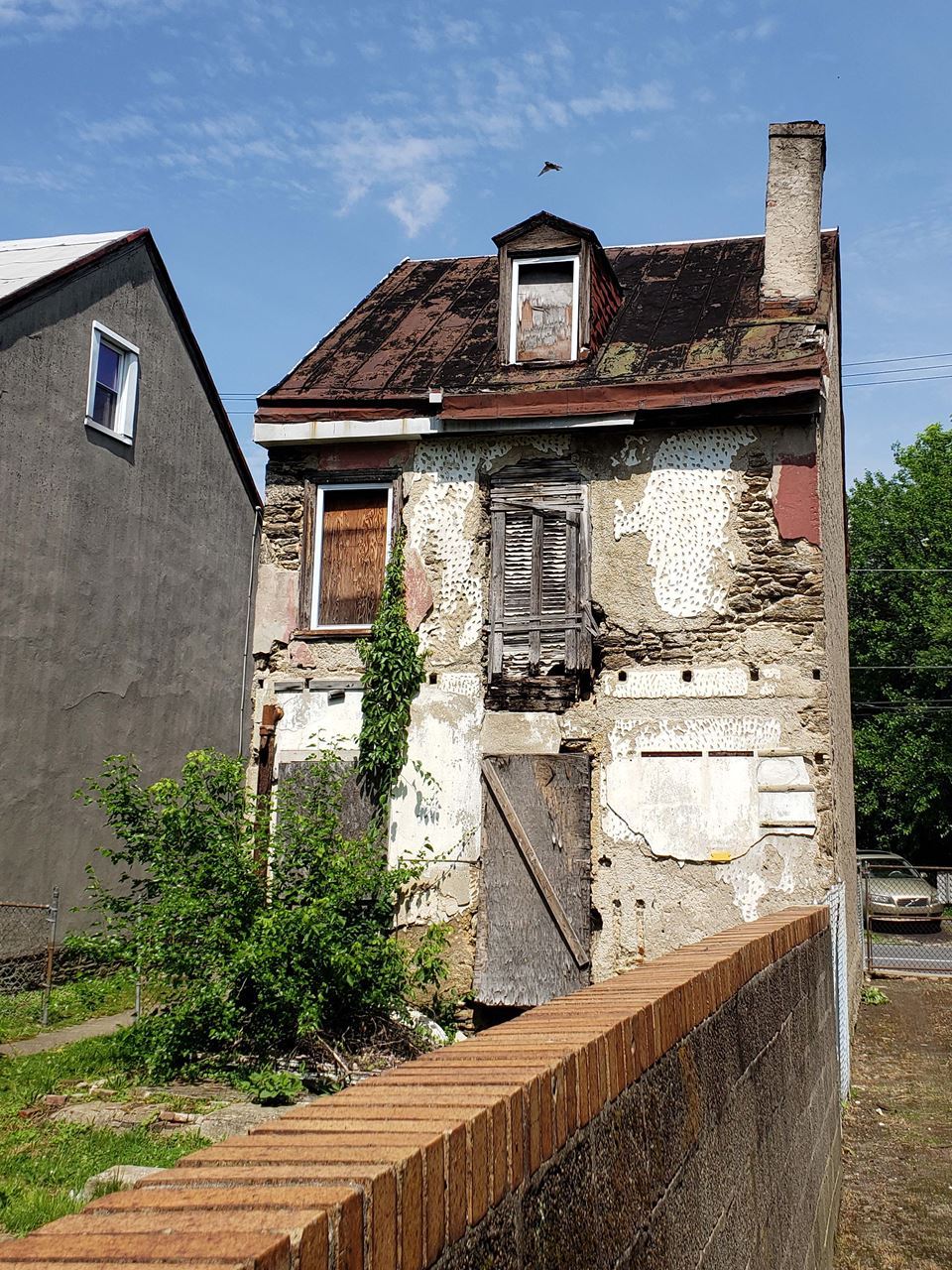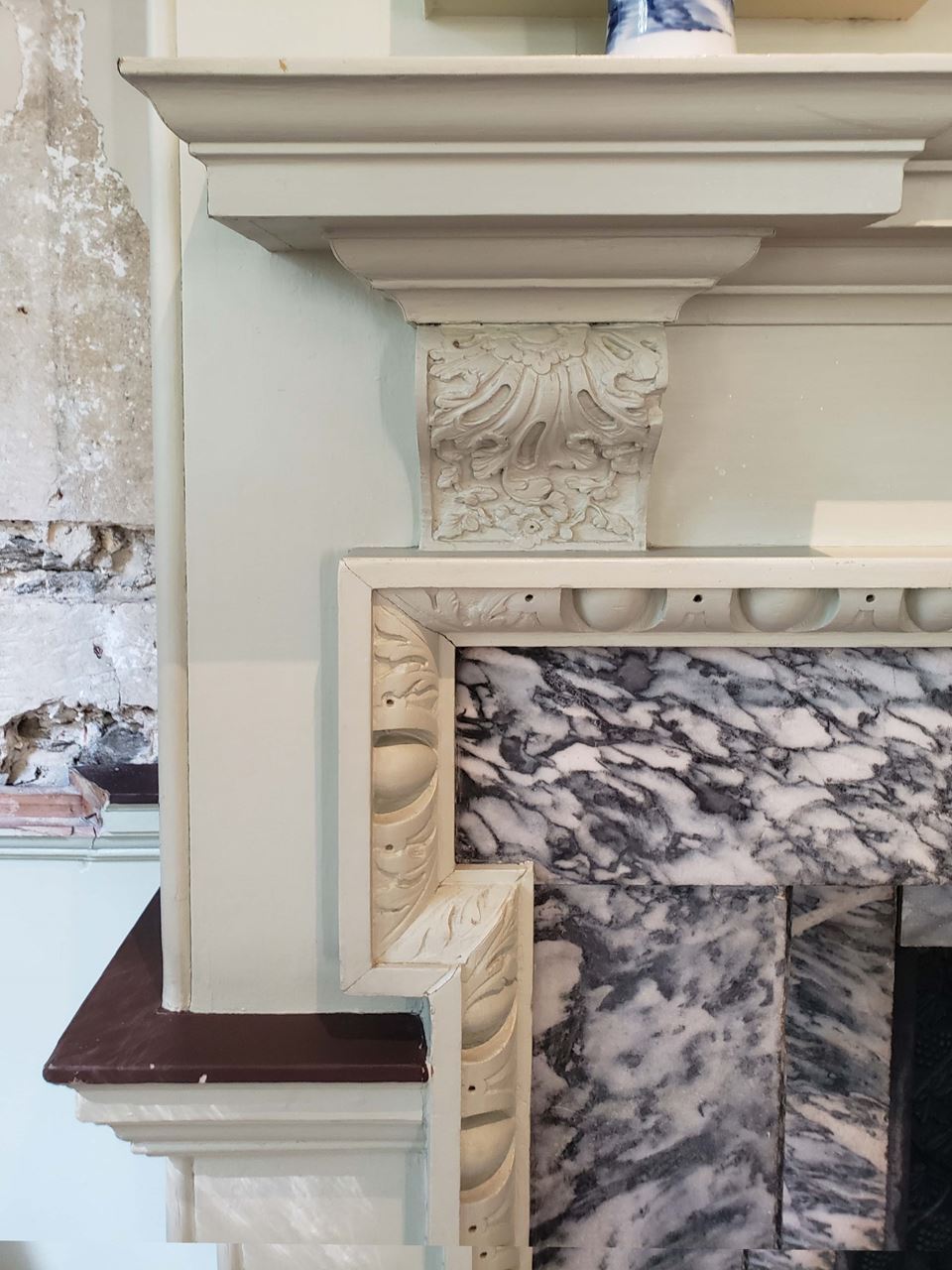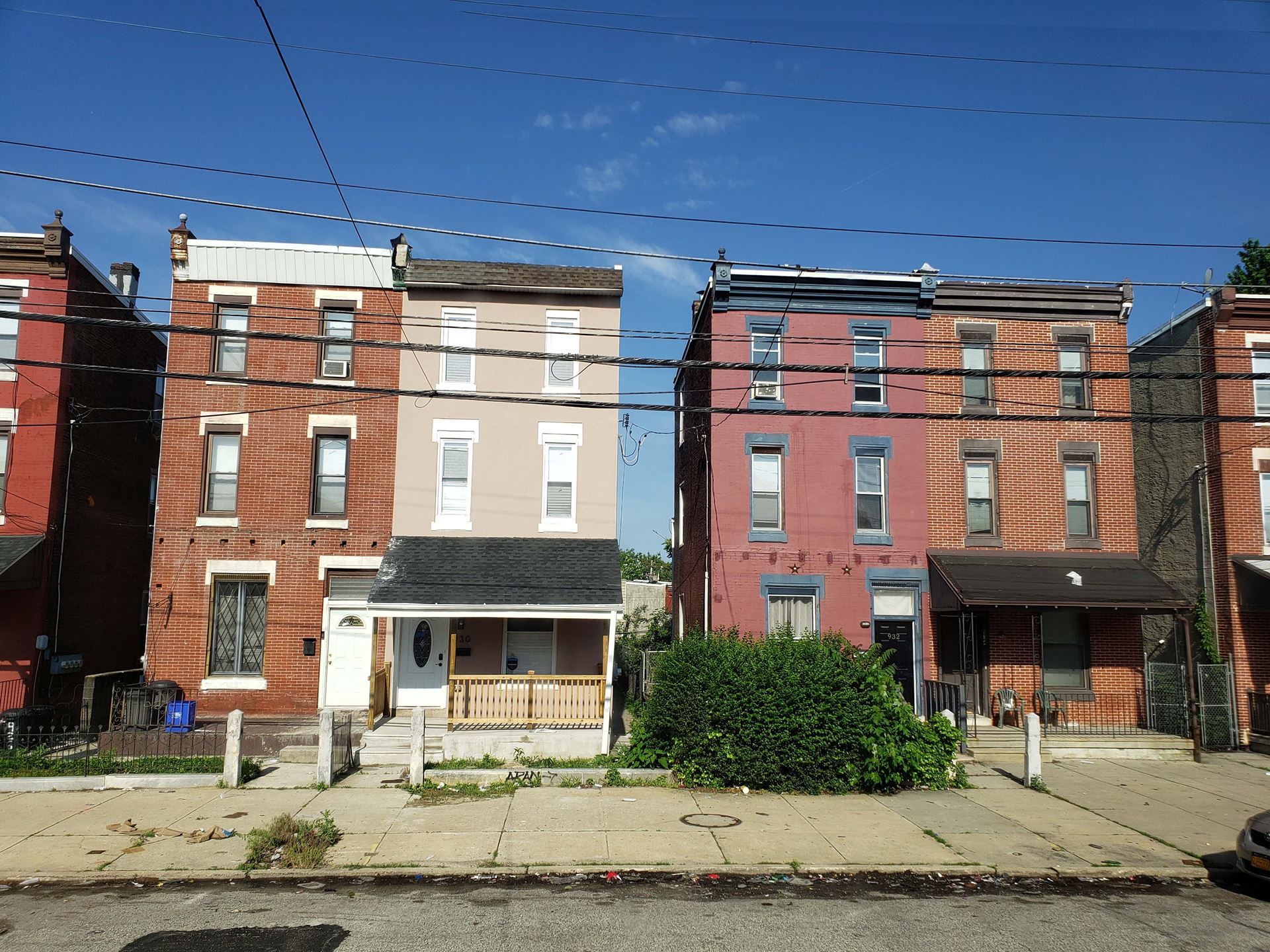by Access Awardee Jose R. Vasquez
“You take delight not in a city’s seven or seventy wonders, but in the answer, it gives to a question of yours.” --Invisible Cities by Italo Calvino
 It would seem as if the house at 122 East Rittenhouse street could not be farther away, socially, culturally or in style, from the affluent estates of Germantown. Yet its walls reveal a layered history compellingly familiar to all of us whose work intersects with the vernacular. The house is one of four nearly identical houses built between 1848 and 1850 on the same street by a house carpenter named Mr. Jacop Roop Jr, as investment properties. As austere as they may appear presently their stories are nothing of the sort, in fact they exemplified the essence of the 2018 VAF conference Landscapes of Succession. They have provided shelter to individuals specializing in various trades, a baker and a house carpenter among others. Successive occupants encapsulate an ethnic cross section of Philadelphia’s population for over a century, Irish Americans, Italians, and African American families.
It would seem as if the house at 122 East Rittenhouse street could not be farther away, socially, culturally or in style, from the affluent estates of Germantown. Yet its walls reveal a layered history compellingly familiar to all of us whose work intersects with the vernacular. The house is one of four nearly identical houses built between 1848 and 1850 on the same street by a house carpenter named Mr. Jacop Roop Jr, as investment properties. As austere as they may appear presently their stories are nothing of the sort, in fact they exemplified the essence of the 2018 VAF conference Landscapes of Succession. They have provided shelter to individuals specializing in various trades, a baker and a house carpenter among others. Successive occupants encapsulate an ethnic cross section of Philadelphia’s population for over a century, Irish Americans, Italians, and African American families.
According to Dr. Camille Wells, “… part of what attracts us to old buildings is their insistence on communicating, in some outmoded dialect we entirely do not understand, the energy and purpose, the achievements and hopes, the disappointments and hardships, of those who made and used them.”
Wandering through Philadelphia’s storied streets defined by rowhouses, discreet alleyways, and former agricultural and industrial landscapes I was beguiled by the possibilities, challenges, and paradoxes embodied by vernacular architecture. The enduring bricks of Philadelphia, the wood carved details of porches and rotting cornices, and the skillfully chiseled mantelpieces furnished my mind with textural imagery and questions that I will be passing on to my architecture students in Miami.
 The commonplace, built, repurposed, or sadly derelict underlined my experiences as a first time VAF conference attendee. In Germantown my peripatetic tour wanderings took me, and got me lost at times, from proverbial “high” to “low brow” places and the spaces in between. From Cliveden, a Georgian 18th century country house, to the working-class Morton neighborhood, and to the 19th century upper middle-class enclave of Bayton hill, I found myself, literally and metaphorically speaking, searching beneath the stones and fading wallpapers tackling the silencing of history. This concept was formulated by Haitian scholar Michel-Rolph Throuillot in reference to those events, peoples, and places deliberately sidelined or suppressed by “other(s)” historical narratives. The VAF walking tours and the conference paper sessions facilitated a rereading of these histories, hence lending them a voice at a critical moment in our national history when these histories can’t longer be overlooked. Visiting Philadelphia’s contested sceneries of succession, I got my fill of architectural details, spatial impressions, and scholarly discussions in the context of rough streets, manicured lawns, and hot attics. In company of seasoned VAF members, now new friends, I got to experience this city, as privileged outsider. I came across places that could not be diametrically different, like the workers houses on East Rittenhouse street and the countless anonymous blocks of rowhouses defining the urban fabric that I scrutinized during the conference’s periphery bus tours.
The commonplace, built, repurposed, or sadly derelict underlined my experiences as a first time VAF conference attendee. In Germantown my peripatetic tour wanderings took me, and got me lost at times, from proverbial “high” to “low brow” places and the spaces in between. From Cliveden, a Georgian 18th century country house, to the working-class Morton neighborhood, and to the 19th century upper middle-class enclave of Bayton hill, I found myself, literally and metaphorically speaking, searching beneath the stones and fading wallpapers tackling the silencing of history. This concept was formulated by Haitian scholar Michel-Rolph Throuillot in reference to those events, peoples, and places deliberately sidelined or suppressed by “other(s)” historical narratives. The VAF walking tours and the conference paper sessions facilitated a rereading of these histories, hence lending them a voice at a critical moment in our national history when these histories can’t longer be overlooked. Visiting Philadelphia’s contested sceneries of succession, I got my fill of architectural details, spatial impressions, and scholarly discussions in the context of rough streets, manicured lawns, and hot attics. In company of seasoned VAF members, now new friends, I got to experience this city, as privileged outsider. I came across places that could not be diametrically different, like the workers houses on East Rittenhouse street and the countless anonymous blocks of rowhouses defining the urban fabric that I scrutinized during the conference’s periphery bus tours.  They spoke a shared language and experience which was insistent in its humanity. I cherished the generous hospitality bestowed on us by homeowners allowing us unfettered access to their dwellings and enthusiastically answered our questions. During the conference second day I crisscrossed the city in a “long walk” experiment, or rather what I would call rowing walks, heading from the University of Pennsylvania and walking to several rowhouse neighborhoods and urban networks west of Rittenhouse square. I thought that the City Hall was worth a detour ( it was!) and found myself in the midst of a community party celebrating Walt Whitman's 200th birthday, then looked up at Mr. William Penn and from there found my way to examine Elfreth’s Alley, with its shared building stories to conduct more rowing amongst the red vastness of the city of Brotherly Love and Sisterly Affection.
They spoke a shared language and experience which was insistent in its humanity. I cherished the generous hospitality bestowed on us by homeowners allowing us unfettered access to their dwellings and enthusiastically answered our questions. During the conference second day I crisscrossed the city in a “long walk” experiment, or rather what I would call rowing walks, heading from the University of Pennsylvania and walking to several rowhouse neighborhoods and urban networks west of Rittenhouse square. I thought that the City Hall was worth a detour ( it was!) and found myself in the midst of a community party celebrating Walt Whitman's 200th birthday, then looked up at Mr. William Penn and from there found my way to examine Elfreth’s Alley, with its shared building stories to conduct more rowing amongst the red vastness of the city of Brotherly Love and Sisterly Affection.
The commonplace fostered unique experiences often interspersed by serendipitous moments. They happened while touching masonry walls, listening to someone explain American colonial furniture wood joinery, or watching Dr. Richard Longstreth, this year's Henry Glassie awardee, under the drizzling rain taking photographs of Stenton’s colonial revival garden. It was while at Stenton, amongst the city’s earliest surviving and well-preserved buildings, where I became acquainted with Dinah’s life, an enslaved servant whose resilient spirit helped disperse the silence of the walls making history vividly relevant again, thus, reminding me that old buildings and frayed walls draw us closer with kind relatedness as we endeavor to make sense of our entangled present and silenced stories.